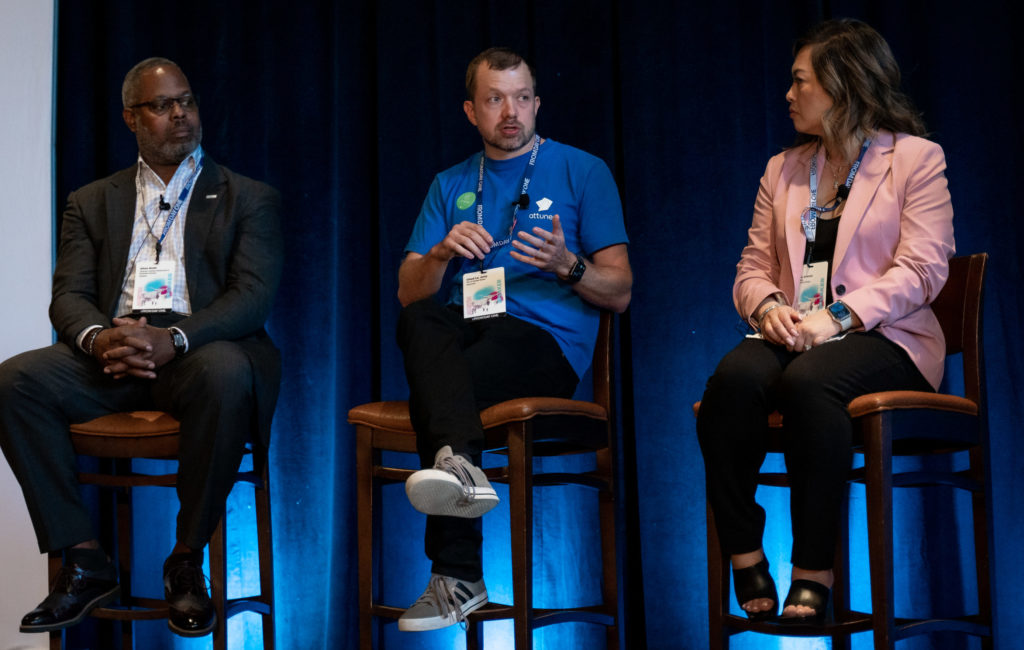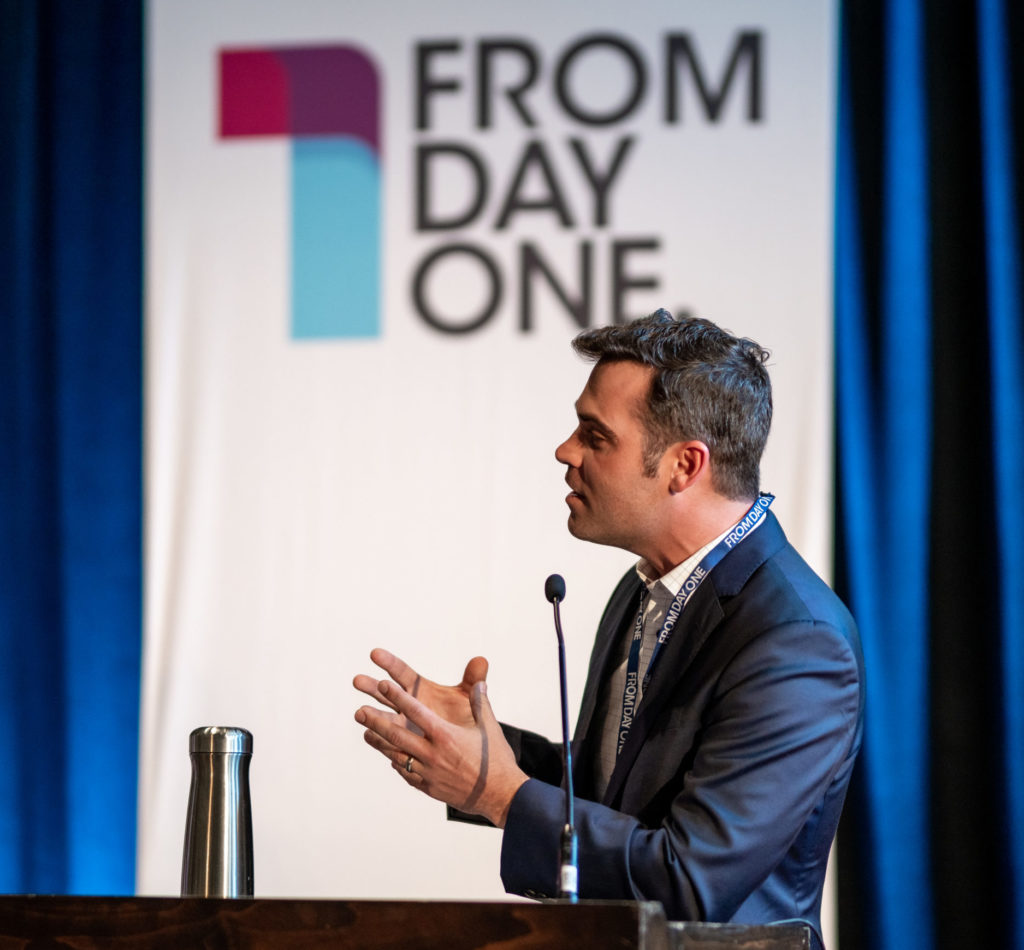Building a Workplace Culture That Prioritizes Well-Being
When it comes to well-being in the workplace, one can hardly generalize, as every generation has its demands. Boomers are gearing up for retirement, Gen X is sandwiched between childcare and eldercare, Millennials are starting their families and dealing with a housing crisis, while Gen Z is fresh out of school.“It’s not a one-size-fits-all, so if you don’t know what the population is looking for, you might be investing in the wrong places,” said panelist Stefanie Christmas, global head of diversity, equity and inclusion at Inizio, during From Day One’s Philadelphia conference.Still, there are some industry-wide areas that are demographics-agnostic. In 2023, The American Psychiatric Association found that the majority of the employers think the work environment is healthier than it actually is. More than 50% of workers strongly (21%) or somewhat (34%) agreed that their employer thinks their workplace environment is a lot mentally healthier than it actually is, and 43% reported worrying that if they told their employer about a mental health condition, it would have a negative impact on them in the workplace, reads the report.Well-being does not just mean wellness. “We’re looking at well being in the less traditional way: we’re looking at it through the lens of social, emotional, and financial wellbeing,” said Magdalena Dexter, SVP of communication and HR at manufacturing company Saint Gobain, which operates in 76 countries and has a workforce of 76,000 in North America alone. “Think about well-being holistically. It [encompasses] physical, financial, career growth,” Christmas said.When thinking about well-being and how to build it within an organization, the first question Tyler Zalucki, client executive at Marsh McLennan Agency asks is: “‘What is your feedback loop?’ and ‘How are you capturing the sentiment of employees and colleagues through a well-being lens?’”The panelist spoke in a discussion titled, "Does Your Company Genuinely Care About Well-Being? How to Show It Through Your Culture," moderated by Lizzy McLellan Ravitch, Business Coverage Editor, the Philadelphia Inquirer“In our organization, the respective manager will fill out a survey and speak with individuals to capture their sentiment and aggregate it,” he said. Then, during their town hall, the CFO and HR Director offer solutions to what was shared. “This feedback led to changes like implementing paternity leave, increasing contributions to the 401(k), and making December 24th a full day off,” he said. “It reinforces the sense that ‘my voice matters,’ because if feedback goes into the ether, employees feel unheard.”Getting Specific With NeedsCora Claus, VP of HR at Burlington Stores, emphasized the importance of understanding the employee population: who are they? What do they need? What do they want? “I work for a retailer, largely female based, and for a long time we had a lot of them going on leave of absence, starting their families, and they’re not getting paid but a minimum wage,” she said. “We now are implementing policies: as you’re designing the policies, who are you writing them for?”Getting to know the workforce also means helping to clear away any misconceptions. Scott Thompson is the CEO of Tuition.io, which helps employees with financial education. The total amount of student-loan debt is close to $1.8 trillion dollars, and you might be surprised at who the most affected group is. “The fastest growing segment for student loans is 55 and up,” said Thompson. “That’s parents taking on debt for their kids.”In order to thrive at work, people need to feel included. “As we know, DEI is under intense scrutiny, but at its core, it’s about inclusion—making sure people can bring themselves to work in a way that feels comfortable,” said Christmas. “A lot of people say, ‘Bring your whole self to work,’ but many employees feel more comfortable bringing just 55% of themselves. How do we support that?” Christmas emphasizes the idea that for DEI work to work, “it has to be seen as everyone’s responsibility. This includes sponsoring events and encouraging leaders to show up. One impactful practice is having senior leaders participate in quarterly calls, asking questions, and engaging in the conversation.”Ultimately, a company can have the best programs, but if the leaders don’t buy into them, don’t lead with that and implement them, you really don’t have a culture of well-being. “You can put the best parental leave in place, but if a senior leader can complain that he has 3 people out, it’s going to send waves through the organization about how we truly feel about it,” said Dexter. “It’s not just about having the program, it’s about talking positively about it, showing examples of how important it is to take advantage of it.”Universal NeedsStudent loan debt has only become more challenging for borrowers, partly due to all the noise in the media. Efforts to improve the situation have unintentionally made it worse, as some employers diminished the importance of loan support, assuming it would be resolved under the current administration. “That hasn’t happened—and likely won’t,” said Thompson.“When we break down student loan debt by age segments, we see the impact. For example, a recent college graduate with $40,000 in debt faces a monthly payment of about $500 after taxes,” he continued. “At 25, I would not have been able to make that payment. And it doesn’t get easier over time; most people aim to pay off their loans in 10 years, but it often turns into a 21-year commitment due to the financial missteps that come with starting a career,” said Thompson.And while he is not suggesting that all companies need to contribute to loan payments—though that would be nice and certainly helpful, “offering assistance in understanding options and finding pathways to manage debt is a big win, with spectacular retention benefits,” he said. “It’s about meeting employees where they are and helping them move forward.”In many companies, the adage seems to consist of teams being told to do more with less, and that might be at odds with well-being. “When I think about my own organization, when I think about doing more with less, we have an AI tool that allows you access to compliance resources and will also write emails,” said Zalucki. Other resources include open office hours to ask questions and then do modules exactly on what one is working on that day. “Do the things you like and enjoy and iterate admin tasks,” he said. “At the end of the day, we want to spend more time with our family.”A similar mindset also steers employers and employees towards an 80/20 perspective. “For so long, our organization has been focusing on being perfect,” said Claus, noting that they changed towards 80/20. “Are we comfortable with 80? It’s that permission to be directionally correct so that we don’t spend too much time getting to false perfection.”This also requires leaders to understand the cycle of an organization. If Q4 is the busiest time of the year, for example, a slower Q1 should allow employees to take a break. “Don’t let them sprint through that, let them have moments to breathe,” said Dexter. “What can we deprioritize? What can we take off?”“It’s about how you’re showing up but also how we empower our team to have conversations that need to be had,” said Claus. She speaks about how frustration can pile up because we don’t have the courage to speak or there’s no safe space to do so or there’s no empathetic leader. They began coaching associates to handle conversations independently, teaching them to engage and leaders to respond with positive intent.Angelica Frey is a writer and a translator based in Boston and Milan.






